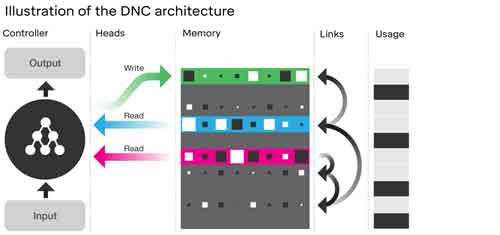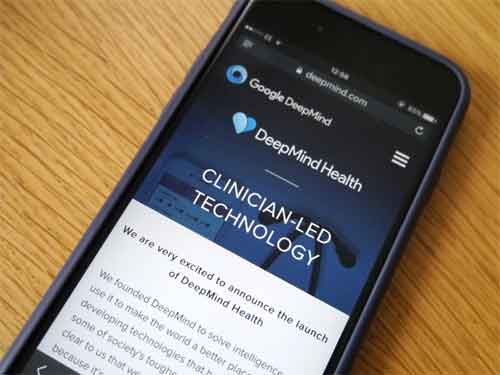Loading…
Google DeepMind AI
The Google DeepMind AI, or Artificial Intelligence, is one of the breakthrough moments in the 2010s. AI is something that has evolved in sophistication over the decades that followed; from web search algorithms to technologies such as Alexa and Siri, Artificial Intelligence plays a part.
In this article, we look at the history of DeepMind AI; what it is and how it originated, and its acquisition by Google in 2015.
We then look at the main pros and cons of Artificial Intelligence, which is a source of strong debate in my experience talking to other I.T professionals. We then look at specific technologies that AI, and DeepMind AI, have evolved in the subsequent years, including Chat Bots and Healthcare (a subject close to my heart).
Join The Human Byte — Get The Ultimate BIOS Update Guide
- Receive the ultimate BIOS update pack
- Includes a set of checklists and flowcharts to support your BIOS update process
- Also includes the full set of common FAQs from users who experience BIOS update issues
- Receive regular emails with practical information you can use
- I only use your e-mail for the newsletter. Unsubscribe anytime.
Contents
What is DeepMind AI?
Deep Mind was founded in 2010 by Demis Hassabis, Shane Legg, and Mustafa Suleyman. The UK-based firm focused on developing advanced artificial intelligence techniques, and applying them to real-world problems, as a means to improve the quality and speed of outcomes, including Healthcare.
The founders created a general-purpose AI system capable of learning and adapting to set tasks. This was achieved by combining different areas of AI research, including reinforcement learning, deep learning, and cognitive architectures.
Essentially, the objective of DeepMind was to create an AI system that could "learn and think" like humans. To achieve this, the different combination of AI techniques introduces algorithms and routines that mimic "learning from experience, reason, and understanding concepts".
The founders developed new algorithms and architectures for deep learning techniques, enabling successful image recognition and natural language processing (like conversing with a human). They also focused on new approaches for reinforcement learning, i.e. learn by taking actions for reward if successful, and penalties for failure.
The success of DeepMind attracted the interest of Google, who acquired the company for $500 million. Google Deepmind AI has since developed new AI systems to improve Google's products and services, such as its search engine algorithm to put the best articles on the first page of your search results. This is an area of research that needs constant improvements.
DeepMind has achieved success in the 2010s through AI systems such as Alpha Go and AlphaFold; the latter being able to accurately predict 3D models of protein structures, accelerating research in all fields of Biology, and helping breakthroughs in disease treatment and eradication.
 Google DeepMind AI
Google DeepMind AIThe Staff Hard At Work
Source:- deepmind.com/about
Return to the Table of Contents
How Does The Google DeepMind AI Work?
Google DeepMind AI uses a variety of techniques to learn from raw data. Deep learning, for example, is a subset of machine learning, which uses neural networks with multiple (deep) layers to understand data.
These networks are "trained" using huge amounts of data that is tagged for the AI to recognize patterns and make predications.
The reinforcement learning techniques support the AI system to make the "right" decision in achieving whatever the goal or task that has been set. This can also include game playing.
In January 2017, the Google DeepMind AI Game Playing system best the world's best Go player, an ancient Chinese strategy game. Ke Jie was beaten by half a point, in a game lasting 4 hours 15 minutes.
The more data an AI is subjected to, the more exposure it has to patterns and techniques, and therefore evolves to better outcomes and predictions.
 Google DeepMind AI
Google DeepMind AIKe Jie Losing A Games Of Go To An AI
Source: newscientist.com
Google DeepMind AI also uses the concept of "Transfer Learning". This is where the AI model learns from one task, and transfers that learning to another task, just like humans and some animals do.
This reduces the amount of data and computational resources needed to train the model on the new task, which is important for power consumption and climate care (especially these days).
Google use DeepMind systems to improve performance and energy efficiency of its data centres, by optimizing cooling systems, which conversely reduces running costs.
In 2016, google announced it has incorporated the DeepMind neural network-based machine learning system, called "RankBrain", into its search algorithm.
RankBrain is designed to understand and interpret the natural language queries we use when searching the internet, and delivering better, or more relevant, search results. The deep learning techniques analyse and "understand" the meaning of words and phrases in a search query, and matches those queries to the contents of web pages, like this.
DeepMind also developed a technique called "Differentiable Neural Computer" (DNC) which uses memory to "answer questions about complex, structured data, including artificially generated stories, family trees, and even a map of the London Underground". - Deepmind.com.
Below is a typical architecture diagram that show how DNC works.
 Google DeepMind AI
Google DeepMind AIDifferentiable Neural Computer Architecture Diagram
Source:- techxplore.com
Return to the Table of Contents
Artificial Intelligence Pros and Cons
Artificial Intelligence evolved at a rapid pace in the 2010s. It wasn't until mid-2023 when the next evolution was released, called ChatGPT. We have seen how AI can benefit humanity, but there must be a balanced view about the pros and cons of AI, and this is what this section aims to cover.
Towards the end of the 2010s, the following bullet points are broadly what the current thinking was regarding the pros and cons of AI. This includes:-
The Pros of Artificial Intelligence
- Improved efficiency and productivity:- AI automates repetitive tasks and therefore makes the processes more efficient. This reduces human error and frees up time and resource for other, more important tasks.
- Improved decision-making:- AI can analyze large amounts of data, quickly and efficiently, identifying patterns and trends human may to notice, helping to make better decisions
- Improved Customer Service:- AI-powered chatbots (see the next section) and virtual assistants provide fast, efficient customer services 24/7/365 (assuming their data is accurate in my experience!).
- New opportunities and innovation:- AT can enable new products and services (such as supporting the writing of web pages!), and can also be used to solve previously unsolvable problems, such as disease cures.
- Improved safety and security:- AI can be used to identify and prevents security threats (this is a double-edged sword), and monitor critical infrastructure, such as water and power plants.
The Cons of Artificial Intelligence
- Job Displacement:- If AI is automating many routine tasks, then organizations could be asking themselves why they need so many staff members.
- Bias and discrimination:- AI systems "learn" based on the data that they are exposed to. If this is biased or one-sided, even unintentionally, then the outcomes can quickly turn, as Microsoft found with their Tay AI chatbot.
- Lack of transparency and accountability:- When an AI system decides and then takes an action, what rationale was this based on, and how do you peer-review the context of the decision or action?
- Privacy concerns:- AI systems can collect and use large amounts of personal data, which could be used for nefarious purposes by cyber criminals. AI can also learn how to commit cyber crime.
- Dependency on technology:- I've always though that as society becomes increasingly reliant on AI, it likely becomes more difficult to function without it (mobile phones anyone?). Technology failures or disruptions have increasing consequences the more dependent we become.
As the 2010s were drawing to a close, it was clear that further work was required to set up appropriate ethical guidelines and conditions for future developments.
From what I have seen so far, with any new technological advancement, humans are slow to catch up with the consequences, until after they have happened, and we then retrospectively apply rule sand conditions to try and prevent future issues. These do not always work, as you probably know.
Return to the Table of Contents
The Artificial Intelligence Chat Bot
An Artificial Intelligence chatbot is a computer program designed to simulate conversation with human users, especially over the internet. They are typically used in customer service, providing information, and help customers to complete tasks.
I am sure most of us have used one before. I think they need further work because you can end up in constant loops and not get anywhere fast with your query.
There are two chatbots designs, which are called rule-based and self-learning.
Rule-based chatbots use a pre-defined set of rules and conditions, with a decision tree constructed to respond to requests, or use input. They handle simply queries only. Anything more complex is limited, "I'm sorry, I do not understand that".
The video below is an excellent watch on chatbots.
Self-learning chatbots use techniques such as natural language processing (NLP), and machine learning to understand and respond to human queries. These chatbots are more likely to provide a satisfactory response, and have the ability to evolve, as they process more information.
Chatbots are integrated in a variety of platforms, such as websites and messaging apps, through text and voice type inputs.
A key benefit of chatbots is their ability to handle multiple interactions simultaneously. This means huge enhancements for customer service responses, 24/7/365.
Chatbots evolved in the 2010s, but they were far from perfect. More often than not, in my experience, you have to be handed over to a human agent.
Return to the Table of Contents
Artificial Intelligence in Healthcare
The Google DeepMind AI services were being used in healthcare, specifically focusing on analyzing medical imaging data, such as CT and MRI scans.
By learning the subtleties in disease patterns that are hard for humans to detect, AI can support clinicians in making more accurate and earlier diagnosis, and treatment recommendations, thus, saving lives.
The DeepMind organization was also developing AI-based diagnostic tools to help identify conditions such as eye disease and breast cancer much more quickly. The "Streams" app supported Doctors to identify patients at higher risk of kidney disease.
Again, sources of clinical data are necessary to support the decision-making process, and this has to be fair across all races etc., and with the right permissions to use.
 Google DeepMind AI In Healthcare
Google DeepMind AI In HealthcareSource: techcrunch.com
Google DeepMind AI was also being used in new drug discover, specifically analyzing proteins and molecule patterns, with a view to developing new drug treatments.
The scheduling of appointments, surgeries and healthcare resource management, such as dynamically allocating staff to medical activity base don availability, proximity and skill sets, are all being supported by AI systems.
Return to the Table of Contents
Google DeepMind AI | Final Thoughts
AI is here to stay, and the Google DeepMind AI evolution is set to continue, but I suspect this will be mainly focused on their own products and services. Heading into the 2020s, we are seeing the potential for:-
- Continued developments in natural language processing, improving accuracy and relevance of search results, and ability to understand and generate human-like text.
- Advancements in computer vision, to improve image and video recognition, and to enable new applications such as self-driving cars.
- Development of general AI systems that are capable of understanding and learning from a wide range of data types and tasks.
- Further enhancements to energy efficiency techniques.
- Healthcare developments, using AI to analyze medical data, and help doctors make more accurate diagnoses and treatment recommendations
Was this page helpful?
Thanks! ✅
